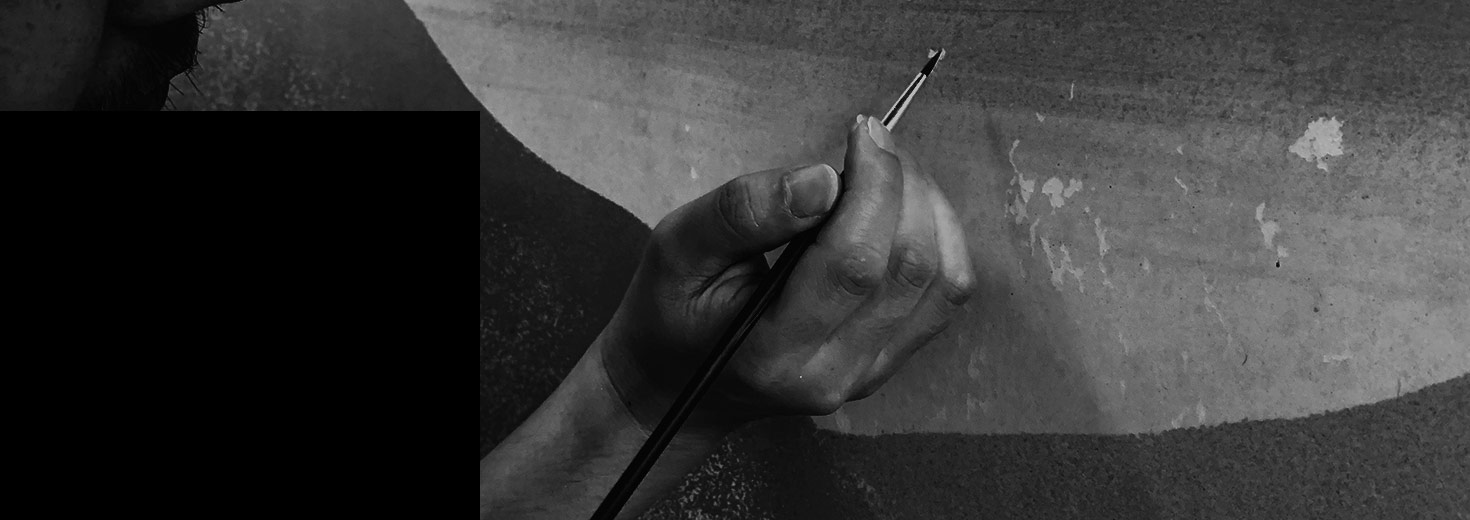About Hyogu Artisan
表具師とは
「掛け軸、額装、屏風、画帖、巻物」など美術工芸品的なものや「襖、壁装」など日常生活に密着した実用的な分野を手掛ける職人を「表具師」と言います。
“Hyogu Artisan” is an artisan who handles arts and crafts such as: hanging scrolls, framing, screens, sketchbooks, scrolls, and also, practical fields such as fusuma (sliding door) and wall covering, all which is deeply involved to our traditional daily life.

1968年(昭和43年)「一級技能士(全国)」叉、1997年(平成9年)「伝統工芸士(京表具)」という資格が出来ました。それぞれ一定の「技術&筆記テスト」を受けられ合格されてきた素晴らしい職人達さんです。でも「一級技能士」「伝統工芸士」を持っておられない方達でも「卓越した技術」を持っておられる職人さんは多数おられるのです。
In 1968, “1st grade certified technician (national)” and in 1997 “traditional craftsman (Kyo-hyogu)” certification was made. Those who were certified are great craftsmen who passed certain technique and written examinations. However, there are also many outstanding craftsmen that does not have these certifications.
特に「掛け軸」は表具師によって技術(作業.材料.他)が違いますし、作品が納まる地域(風土)や使用目的によって作業内容を変える必要があります。また「古美術(修理、修復)」を扱う場合は「経験」の上に成り立つ「勘」が頼りになり、それぞれとても高い「技術」が必要とされ、とても「一連の試験」などで「査定評価出来ない技術」でもあります。現実に「一級技能士」「伝統工芸士」を持っておられる職人さんでも「手打ち作業の掛け軸製作」が出来ない方や「古美術品」の修理を扱えない表具師さんは多数おられます。「古美術」の修理修復に関しては「資格」にとらわれない「真の技術者」に出逢われる事が「良い作品を後世に残せる」ことと思います。
「掛け軸、額装、屏風、画帳、巻物、襖、障子、壁装(和紙~ビニールクロス)」と多種に渡って活躍する「表具師」!
「表具師」とよく話し合いをされ、みなさんのライフスタイルに合った「感性」の合う「善い表具師」に出会われることをお祈りしております。
合掌(_ _)
Especially for hanging scrolls, techniques differ by the hyogu artisan and the content of the work needs to change depending on its intended use and the local climate where it is used. Furthermore, when antique works are handled (repair, restore), not only is experience required but an overlap of intuition is needed. These techniques and requirements cannot be simply measured by an assessment of exams. In reality, there are many hyogu artisans who has these certifications but are unable to produce hand-made hyogu or restore antique works. For restoring antique works, we believe that meeting a genuine master technician who does not rely solely on certifications is crucial in order to save great works for our future generations.
Active in hanging scrolls, framing, sketchbooks, scrolls, sliding doors, wall covering (from Japanese paper to vinyl cloths), is the hyogu artisan!
We pray for everyone to talk to a hyogu artisan and to meet a great hyogu artisan who has the "intuition" to suit your lifestyle.
Prayer (_ _)
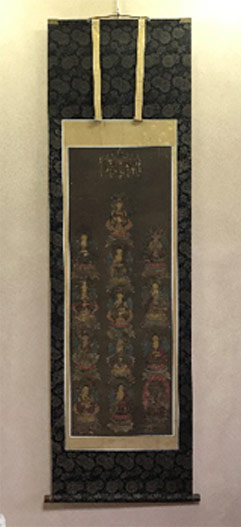

About Kyo-hyogu
京表具とは
表装とも呼ばれる表具は、古くから芸術や宗教が盛んであった京都を中心として発達してきました。表具は裂地や和紙を材料として、加湿と乾燥を繰り返しのうちに、複雑な幾度の工程を経て完成させます。
Hyogu, which is also called hyosou (mounting), have developed from old times where art and religion were flourishing in the center of Kyoto. Hyogu is completed through a complex process of repeated humidification and drying, using saddle cloth and Japanese paper.
表具の歴史は古く、仏教の伝来とともに中国より伝わり、経巻の表装から始まり、掛け軸等は仏教の広まりとともに仏画像の礼拝用として始められたのが原型とされています。
The history of hyogu has a long history. It was introduced from China along with the introduction of Buddhism, starting with sutra scrolls and hanging scrolls, which were originally used to worship Buddhist images.
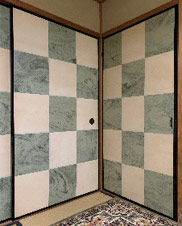
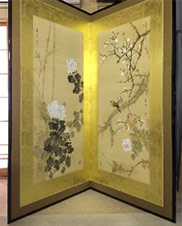
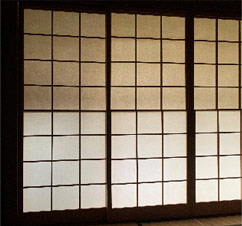

今日、表具と呼ばれる物には「襖、壁装」など日常生活に密着した実用的な分野と「掛け軸、額装、屏風、画帖、巻き物」など美術工芸品的なもの、さらには高度な技術と豊かな経験が要求される「古美術」の修復まで含まれます。
Nowadays, the term "hyogu" includes fusuma (sliding doors) and wall coverings, which are closely related to our daily lives, as well as art and craft objects such as hanging scrolls, frames, screens, sketchbooks, and scrolls, and even "antiques" that require advanced techniques and rich experience.
表具はそれ自体が独立したものではなく、常に「書画」を鑑賞するうえでの手立てとしてなりたつもので、更には「書画」を保存するという役目も担っています。目立たず控えめでありながら、書画と一体の品格ある調和をつくりだし、なおかつ表具そのものの品位も損なわないように工夫する事が要求されるのです。
Hyogu in itself is not an independent item, but always serves as a means for appreciating the "calligraphy," and also serves to store the "calligraphy." It is required to devise a dignified harmony that is inconspicuous and discreet, and that does not impair the dignity of the hyogu itself.
千年の都「京都」の美的感覚と京都の人の美意識に支えられ、また湿度の高い盆地の風土に適して発展してきた「京表具」は床の間の発生や、室町時代から桃山や江戸時代にかけての茶道の興隆などと深く関わりあいながら発展し磨かれていったのです。
Supported by the aesthetic sense of the millennial city of Kyoto and the aesthetics of the people of Kyoto, and developed to suit the climate of a humid basin, "kyo-hyogu" has developed tokonoma (Japanese alcove), and from the Muromachi period to the Momoyama and Edo periods, it was developed and refined while being deeply involved with the flourish of the tea ceremony.
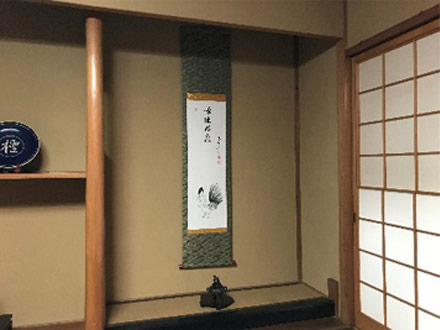
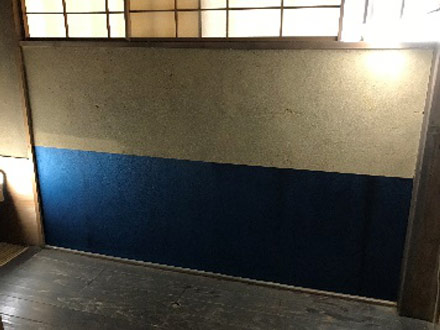

平成9年には伝産法に基づいて国の「伝統工芸品」の指定をうけ、平成19年1月「京表具」が地域団体商標登録されました。
※第52回表美展目録より
In 1997, kyo-hyogu was designated as a "traditional craft" by the government in accordance with the Law of “Act on the Promotion of Traditional Crafts Industries” and in January 2007, "kyo-hyogu" was registered as a local collective trademark.
*From the catalogue of the “52nd Hyo-bi Exhibition”
